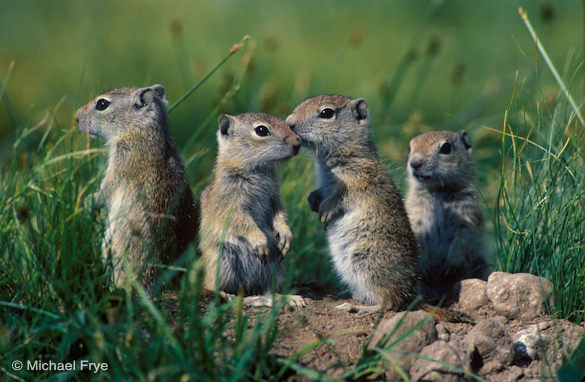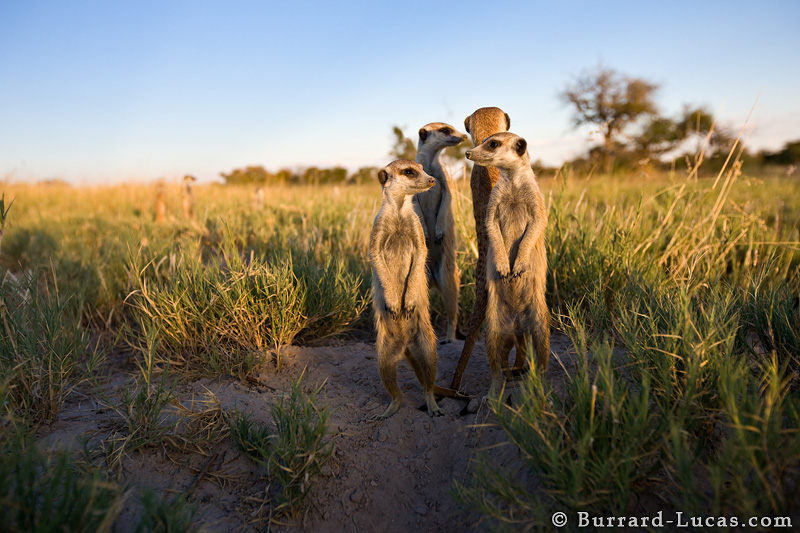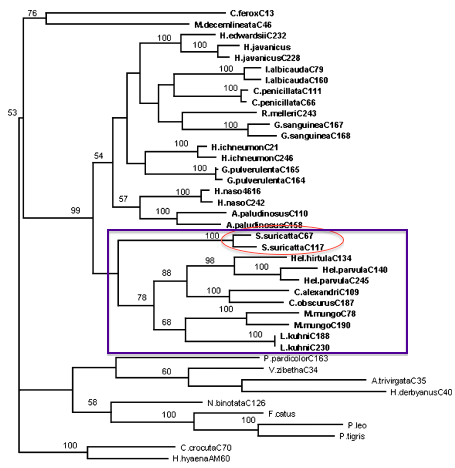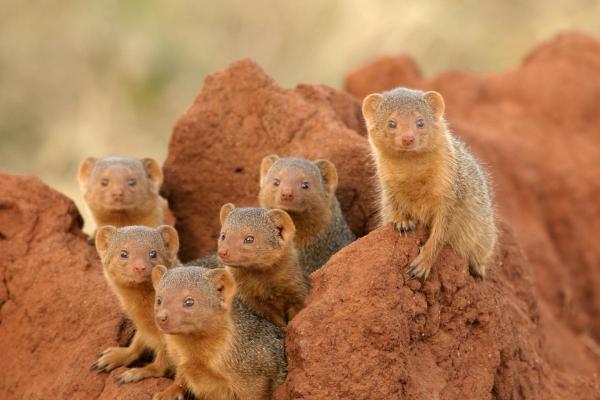Meerkat Surveyors
Biology 342 Fall 2014
Sofia Claesson
Lia Zallar
Phylogeny


3) and 4) Photos courtesy of Michael Frye and Matt Burrard-Lucas

Phylogeny of meerkat vocal communication
The ability to communicate through various type of vocalizations in meerkats likely evolved in tandem with their higher degree of social complexity. Meerkats depend on their social group for protection (Manser 2001). Mongooses, which are several closely related species within the Herpestidae family, demonstrate group living similar to that of meerkats. Mongooses also depend heavily on vocalizations to communicate within the group (Marshall, 2010). In the phylogenetic tree to the left, meerkats (suricata suricatta) are circled in red and various mongoose species are boxed in purple showing their relatedness to meerkats.
5) Tree courtesy of Veron et al. 2004
6) Photo courtesy Roy Toft

How is alarm call communication conserved?
Meerkats are not the only species who produce vocalizations in response to predators. This behavior is seen in many animals. For example, belding's ground squirrels also have different alarm calls for aerial and terrestrial predators. In response to aerial predator alarms, the squirrels run to the closest burrow. In response to terrestrial predators, they escape to a burrow with multiple exits. Vervet monkeys also have different alarm calls for different predators and alter their escape response accordingly. The monkeys run up a tree in response to terrestrial predators, or hide in a bush in response to aerial predators (Manser, 2001).